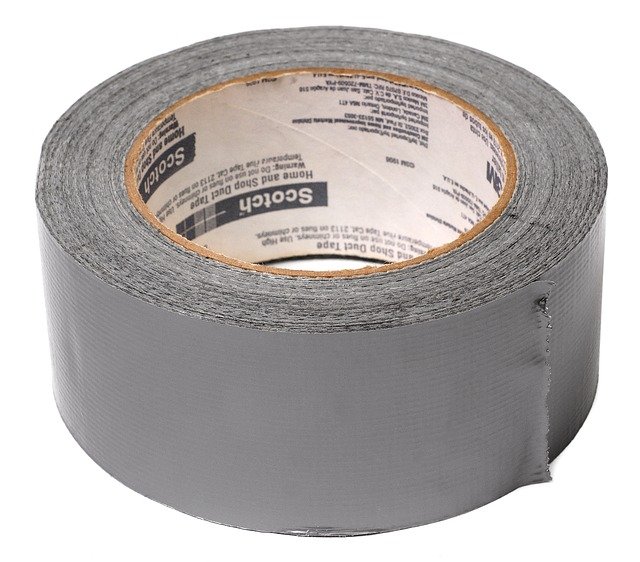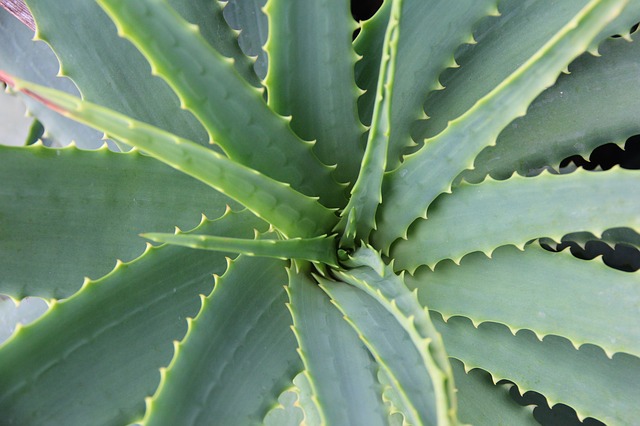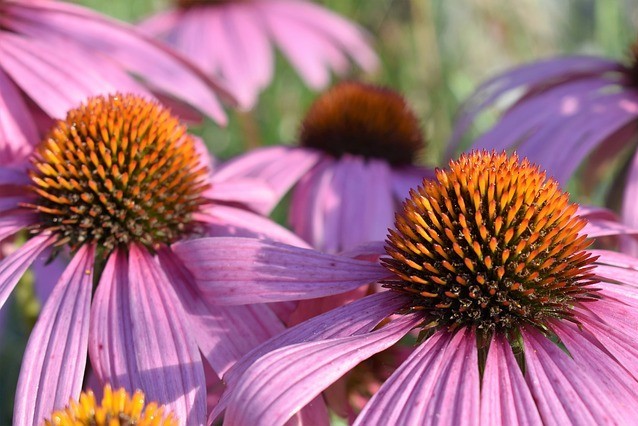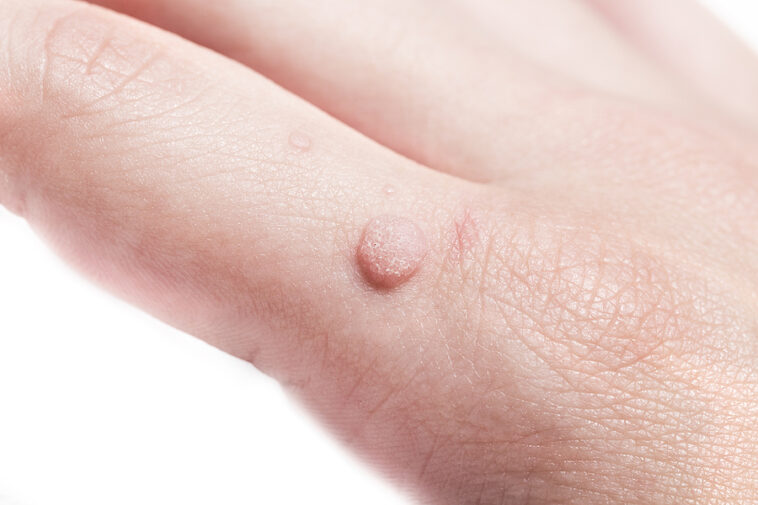Anyone who has ever had warts knows how unpleasant they can be. Sometimes they can be painful, but more than that, they are unsightly and embarrassing. So, if you are on a mission to figure out how to get rid of warts naturally, keep reading. Here we focus on many different natural treatments for warts that are safe and effective.
First, let's look at what warts are and what causes them.
What Causes Warts?
Warts are caused by a viral infection. They are a type of benign tumor in the epidermal layer of the skin. The virus that causes warts is known as the human papillomavirus (or HPV for short). This virus enters the body through a cut or abrasion. Once the virus has gained access to the body, it remains in the inner layers of the epidermis where it may remain totally unnoticed or benign. If it does not, you will notice a wart or warts forming.
There are many different types of HPV (over 130 different strains) that cause different types of warts in different parts of the body. Generally speaking, warts are not dangerous. But, some strains of HPV can be responsible for causing cervical and other related cancers.
It is common for warts to hurt, and feel hard on the outside. As a rule, warts tend to grow as cylindrical columns outwards from the skin. These columns fuse together to cause what you would recognize as a wart. They do not penetrate any further than the upper skin layers. Contrary to popular belief, they do not have roots either.
When a wart grows on a body part where the skin is thicker, the surface will have a mosaic pattern which is sometimes broken up by black dots. These are the visibly broken ends of blood vessels that grow into a wart. Warts need blood flow to survive. So if you attempt to cut the wart out, you will bleed, often profusely.
Are Warts Contagious?
Yes, warts are highly contagious, but some types of warts are less contagious than others. Warts can be passed from person to person by personal contact. It is also possible to contract warts indirectly by the use of a contaminated towel, for example.
Generally, kids tend to contract warts more easily than adults, and it is from children that the majority of warts are contracted.
All kinds of warts are contagious, but none more so than genital warts. These warts are easily passed between one sexual partner and the other from vaginal, anal, or oral sex. So, if you or your partner are aware of genital warts, you must be sure to practice safe sex, or not indulge in sex at all.
Women who have sex with an infected partner can contract genital warts on their cervix. Genital warts are the number one cause of cervical cancer. It is also possible that a sexually active woman could have warts on her cervix and not know it for some time.
The only way to prevent warts is by adopting very high levels of cleanliness and hygiene at all times. For example, if someone in your household has warts, you should make certain they use their own towels and that they are changed regularly.
Who is Most Vulnerable to Warts?
Children, especially teenagers are prone to warts. Yet, anyone can find warts growing on their body.
The time it takes for a wart to develop can vary from person to person. Some people may find a wart developing on their body almost immediately after coming in contact with an infected person. But others will never have a wart problem because their natural immune system has the ability to protect them against HPV.
If you do develop a wart, it is possible it will go away naturally in a few weeks. But it is also possible that some warts can hang around for many months or even years and be difficult to get rid of.
Again, it comes down to the individual and their constitution and immunity. If you have a strong, healthy immune system, it will generally make it far more likely that your body will naturally ‘solve' your wart problem, but it does not always follow.
If you have a weak immune system due to a pre-existing medical condition like Aids or something as invasive chemotherapy, it is far easier for warts to develop. Furthermore, it is probably going to be far more difficult to get rid of them as well be less capable of ‘fighting back' when your immune system is compromised.
Different Types of Warts
Because there are many different types of HPV, it follows that there are many different types of warts as well.
Let's look at some of the more common types of warts.
Common or Classic Warts
These types of warts are most commonly found on the hands and feet, but they can also develop on other body parts like knees or elbows. Typically, the uppermost surface of a common wart will be raised above the surrounding skin and will present a mosaic or cauliflower-like appearance.
Generally, common warts are not painful nor do they present any danger. Still, most people would consider these warts to be unpleasant and unsightly, meaning they want to get rid of them if possible.
Plantar Warts
Plantar warts are typically found on the soles of the feet, especially at pressure points such as on the heels or balls of the feet. While these warts are not particularly dangerous, they can be very painful because of the fact they grow inwards.
Plantar warts can often be mistaken for corns or calluses, but they are recognizable because they are generally flesh-colored growths that are hard, flat, and have very clearly defined boundaries.
Under normal circumstances, plantar warts will show the small black dots caused by broken blood vessel ends. These give you the clue you have plantar warts, rather than corns or calluses.
Because these types of warts are typically found at pressure points on the soles of the feet, they can be extremely painful.
Compared to other types of warts, plantar warts are not especially contagious. This particular strain of HPV causes them to thrive in moist, warm conditions like those found in locker rooms or swimming pools.
Extended time in a swimming pool softens the skin. The abrasive edge of the pool scratches or cuts the skin, and then they enter the communal changing area. In these circumstances, it is hardly any wonder that so many children who enjoy swimming end up with warts almost every time they go to the public pool.
It is possible for plantar warts to disappear naturally, but it is far more likely that they will spread if left untreated. For this reason, it is always best to treat plantar warts as soon after discovery as possible.
Periungual or Subungual Warts
These are warts that appear around the nails of both fingers and toes, causing roughening of the skin surface and some peeling. In order for warts to develop, there must be some existing damage to the skin around the nail.
Warts of this type appear raised and uneven, plus they can cause damage to the nail itself by separating it from the skin or causing the nail to partially detach.
If the wart spreads under the nail, the pressure generated by the growth of the wart can cause considerable pain. And in a worst-case scenario, if the wart causes damage to the nail matrix, a deformed nail structure would be the final result.
It is generally suggested that periungual warts can be more difficult than most other types to get rid of. Also, they will often be accompanied by unpleasant symptoms such as itching or pain.
Flat Warts
Many people who have flat warts do not even know they have them. This is because the most common flat warts are mistaken for ‘sunspots' or even beauty spots.
Flat warts generally appear as a result of too much exposure to the sun. Sunshine ‘activates' the particular strain of human papillomavirus that causes flat warts to become active. The virus has been underneath the skin for some time and has remained ‘dormant' but the necessary ‘dose' of sunlight has triggered a reaction.
This variety of warts might be brown (as suggested) but is not necessarily so because you will sometimes see them in a variety of colors including white, pink and yellow. While many flat warts do not protrude above skin level (hence the name(, some may do so and they can sometimes ‘rise' to a slight point.
Generally, flat wards are unlikely to cause pain or discomfort. They can appear on the face, back of the neck, legs, arms, and hands. They are common in children who spend a lot of time acquiring the cuts and scratches necessary for the HPV strain 3 or 10 to infect the body.
Genital Warts
This is the name that is applied to warts that men suffer in the groin or on the penis. Most commonly, genital warts come up in clusters and are clearly visible. In women, they are known as ‘vaginal warts'.
They are most commonly passed from one sexual partner to another during unprotected sex. The simple way of ensuring that warts of this nature do not occur is to avoid sexual encounters with those that have them.
A third variation is anal warts which are small clusters of same warts that appear around the anal hole which are once again sexually transmitted. However, in the same way that vaginal warts may not be visible if they have infected the cervix, so anal warts may be invisible if they are only on the inside of the anus.
Another important consideration is that genital, vaginal, or anal warts do not have to be visible for any person to be a carrier of the HPV virus. Hence, it is possible that you could be infected by someone who has no outward signs of infection if you are not practicing safe sex (or abstaining).
How To Get Rid of Warts Naturally
There are plenty of natural home remedies that people use every day to get rid of warts. Yet, not every wart removal method works for everyone because every person reacts differently to different treatment methods.
Some or all of the following entirely natural wart treatments may work for you. There is definitely no harm in trying any of these natural treatments before turning to pharmaceuticals.
Duct Tape

Strange as it may sound, duct tape to get rid of warts is effective in up to 80% of cases. It is definitely worth trying as your first wart removal option.
This method involves nothing more than a small piece of duct tape on the wart, thus sealing the wart in an airless ‘tomb'. Whether this ability to seal the wart (denying it the ability to ‘breathe') makes it effective or there is some acid in the adhesive used on this particular type of tape that kills the wart is still open to debate. But the fact is, it works.
In fact, when this method of getting rid of warts was first posited by the head of Children's Memorial Hospital in Chicago, Dr. Anthony J. Mancini. It was discovered that duct tape is every bit as effective as more expensive methods like cryotherapy, so it is definitely worth trying.
How Long Does Duct Tape take to a Remove Wart?
Using duct tape, you cover the wart with tape and leave it covered (replace the tape as necessary) for six or seven days. After this time, you should start to see some results.
Whether there is any evidence of progress after this time period or not, you should remove the tape and soak the wart so that it becomes soft and malleable. Use a pumice stone or an emery board to scrub or scratch off the upper levels of the wart. After this, you reapply the tape for another week and do the same again.
Removing a wart using duct tape can take several weeks. But, it is extremely popular because it is simple, cheap, and entirely natural.
Because it is possible for your body to get rid of a wart in the time it takes for the duct tape method to be effective, it can be a little difficult to know for sure whether it is your body's natural reaction or the duct tape that removes the wart. Nevertheless, because as many as four out of every five people who use this method or removal can find it effective, it is worth giving it a go.
Banana Skins
Applying the inside of banana skins to your warts is also believed to help get rid of warts naturally. In this case, it is believed that the slightly acidic nature of the inside of the banana skin helps to cauterize warts away.
Apply a small piece of the banana skin to the wart and tape it in place. Once again, it needs to be left in contact with the wart for several days before any beneficial effects are likely to be noticed.
If the wart you are trying to get rid of it in a highly visible place, you are probably going to feel a little foolish walking around with a piece of banana skin taped to your body. This is a wart treatment strategy that works best if you apply the banana skin shortly before going to bed and leaving it in place overnight.
Salicylic Acid
Salicylic acid, extracted from the bark of the willow tree is another solution used to ‘burn' warts away.
Using a salicylic acid-based product to get rid of your warts does require a good deal more attention and action because the solution needs to be applied once or twice every day. But using a salicylic acid-based treatment is likely to get rid of your warts more quickly than either of the two previous treatment methods. For this reason, it is a treatment method that is very popular.
What is the Strength of the Acid Solution to Remove Wart?
Depending on the kind of ward that you are treating with salicylic acid, the experts suggest that a different strength of solution should be used. Yet, there is some disagreement about exactly what solution strength is most effective in specific cases.
For instance, if you are using it to deal with plantar warts, then there are websites that suggest that the salicylic solution needs to be at least 40% acid.
On the other hand, there are other sites where it is suggested that a solution of only 15% acid will be strong enough to get rid of exactly the same types of warts.
Consequently, it is a little difficult to know exactly what strength of the acid solution to use. So even though salicylic acid is a natural substance, it is still acid. For this reason, I recommend using the weakest solution possible to start to see how effective it is for you. Only if you discover that it is not working should you move to use a stronger solution.
Prepare Area Beforehand for Best Results
Using salicylic acid to get rid of warts naturally works best if the area to be treated has been properly prepared beforehand. It should be soaked in warm water to make it soft, before removing the top layer of wart skin with an abrasive such as an emery board. Apply the solution as directed, and then cover the wart with a bandaid as it encourages the absorption of the acid solution.
Many over-the-counter treatments such as Compound W and Clear Awa use salicylic acid as the primary active ingredient. Be careful when applying salicylic acid so that you do not apply it to the healthy skin surrounding the wart.
Aloe Vera

Aloe Vera is something of a ‘wonder' treatment because irrespective of what kind of skin problem you have, aloe vera will probably help. Warts are no exception to this.
In order to treat warts using aloe vera, the best thing to do is use aloe vera juice. While it is possible to grow your own aloe vera plants, it can be labor-intensive to extract the juice effectively. For this reason, you can use commercially extracted aloe or use an aloe vera-based cream.
Whatever you decide, soak a cotton ball in the aloe vera solution and apply it to the wart. Use a bandaid or a strip of medical tape to keep the cotton ball in place, and re-soak it in the aloe vera solution as necessary. Continue to wear the band-aid and cotton ball combination in direct contact with the wart for several days. You should start to see some positive results fairly quickly.
Tea Tree Oil
An essential oil produced from the Melaleuca alternifolia tree, tea tree oil is a native shrub found in Northern Australia. Tea tree oil is acknowledged to be a strong antifungal and antibiotic agent with well-known antiseptic qualities.
Because of its ability to kill almost any bacteria, it is an extremely popular way of getting rid of warts naturally as a result of HPV infection.
The application of tea tree oil to warts could not be simpler. Unlike using aloe very, there is no need for cotton balls or bandaids. All that is needed is a daily application of the oil to the wart to start seeing positive results in just a few days.
Castor Oil
Castor oil is derived from the Ricinus communis plant which contains undecylenic acid, a powerful antifungal that attacks warts at the bacterial level. The acid is the active ingredient in many over-the-counter skin treatments as it is highly effective for relieving itching, burning, and other common skin irritations.
Not only does undecylenic acid have antifungal qualities, but it is also known to have antiviral and antibacterial qualities.
Cantharidin
Cantharidin is a poisonous chemical compound that is secreted by the male of many different types of blister beetle, particularly Lytta vesicaroria, or the Spanish fly as it is more commonly known.
Cantharidin is definitely NOT something to be ingested. As little as 10 mg can be fatal. Yet, when it is diluted, cantharidin is highly effective for removing warts because it is a powerful blistering agent that literally ‘burns' the wart out because it is so caustic.
Generally, at the time of application (either something you do for yourself or something a doctor may do), there will be no pain or discomfort. Yet, once the wart starts blistering three to eight hours later, some discomfort or pain may be felt.
After applying cantharidin, you should cover the wart with a bandaid or remove it again 24 hours later. At that point, you (or your doctor) should remove as much of the wart as possible (with an emery board, pumice stone, or by slicing off the top layer of warty skin. Given that one application of cantharidin is often enough to get rid of warts once and for all, this will often mean removing what little is left.
Sometimes the treatment is not 100% successful the first time, and it might therefore be that you need to apply cantharidin again in order to banish the wart completely.
Echinacea

Echinacea is a popular herbal remedy that is extracted from the purple coneflower that is indigenous to North America. For many centuries, it was used as a treatment by the Plains Indians of North America for a wide range of medical complaints due to its ability to boost the strength of the immune system and to ward off viral infections.
While it is primarily viewed as a treatment for warding off winter conditions like colds and flu, it is also a natural antibiotic which is therefore effective for treating infections and fighting off bacteria.
Since having a strong and healthy immune system is the key to your body being able to get rid of warts without any additional interventional treatment, is a good reason for taking echinacea in either tablet or extract form.
Cryotherapy
Cryotherapy or freezing warts is generally considered to be one of the most effective natural wart treatments. Yet, it does not come without its ‘costs'.
First off, it costs more to use cryotherapy to get rid of your warts naturally than it would if you get rid of them using something as simple as duct tape or banana skins.
Secondly, the process involves using a substance like liquid nitrogen to freeze the wart and also the skin around it. While the application of liquid nitrogen using a spray or a cotton swab generally takes less than a minute, it can be quite a painful way to remove your wart.
Cryotherapy is usually administered by your healthcare professional and they will likely use a local anesthetic. Furthermore, pain from cryotherapy can last up to three days, and it may be necessary to undergo treatment several times to get rid of the wart completely.
This is because freezing it in this way tends to kill only the top of the wart, so you may require as many as four cryotherapy sessions (spread one to three weeks apart) to finally get rid of more persistent warts.
What to Expect from Cryotherapy
Within an hour of undergoing treatment, you may find that a blister forms. When this happens, it is common for the blister to burst. In this case, you should immediately clean and disinfect the area to stop the spread of the wart virus. You should avoid contact with the fluid from the blister as this may be carrying the virus as well.
The blister will dry up over the course of the next few days, and it may be that the wart falls off as part of the process.
How effective is cryotherapy for getting rid of warts naturally? It is believed that it will be effective in between 25-65% of the cases. Keep in mind that it is no more effective than using salicylic acid and even the duct tape method is every bit as effective as cryotherapy (if not more so).
So, the conclusion about cryotherapy is that it may work but there are other things you should try before using liquid nitrogen. Incidentally, it is now possible to buy liquid nitrogen over the counter so you can treat yourself at home. But, before you do so, there are other natural treatments that are far less expensive and painful.
Vitamin E Oil and Garlic
Vitamin E (which is generally obtained from vegetable oil) is believed to be a powerful antioxidant and helps get rid of warts because of these qualities. It helps to promote skin regeneration so it is also highly effective for preventing scarring after a wart has been removed.
In addition, garlic is believed to buoy up the immune system, meaning that taking garlic capsules is likely to make your body far more resistant to warts than it would otherwise be.
Commercial Natural Wart Treatments
There are quite a number of websites from where you can buy natural wart treatments. Many of them contain a mixture of some of the natural treatments we have already discussed in this article.
For example, both Naturasil and Avashine wart remover base their products on a combination of tea tree and castor oils.
There are many other natural wart cure products that you can buy either online or across the counter. But be aware that many products do not list the ingredients that they use. This means you have no way of knowing for certain just how natural those products really are.
If you are looking at a product where you have no information about the ingredients, you will have to make your own decision about whether you are satisfied the product is entirely natural or not. This is why it makes sense to try the easiest method first.
Best of luck to you and please comment below what you are considering or what you've already tried to get rid of your warts naturally.



